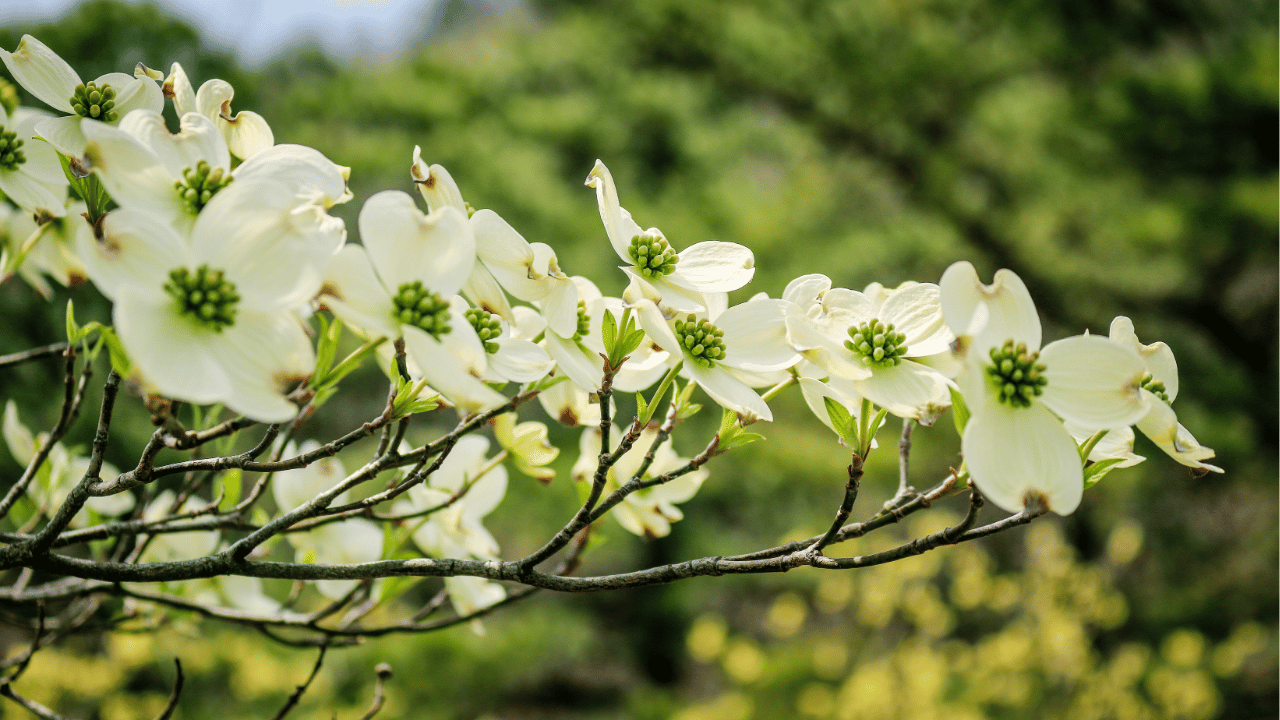Dogwood trees are a beautiful addition to any garden, with their stunning blossoms, vibrant fall foliage, and distinct structure. While they are relatively low-maintenance, they thrive with some extra care. For seasoned gardeners looking to maximize their dogwood tree’s health and beauty, these ten care tips will ensure strong growth, abundant blooms, and protection against common challenges like disease or drought.
1. Choose the Right Location
Dogwood trees prefer partial shade, especially in warmer climates. Plant them in a spot where they can receive morning sun but are protected from harsh afternoon rays. This helps prevent leaf scorch and keeps the tree healthier during the hotter months.
Ensure the soil is well-draining, as dogwoods don’t tolerate standing water. Too much moisture can lead to root rot, while excessively dry conditions stress the tree. Amending the soil with organic matter can improve drainage and support robust growth.
2. Water Consistently but Avoid Overwatering
Dogwoods require consistent moisture, particularly during the first few years of growth. Water deeply once a week, ensuring the soil remains moist but not soggy. A soaker hose or drip irrigation system is ideal, as it directs water to the root zone.
However, overwatering can be just as damaging as underwatering. Always check the soil’s moisture level before watering again. Mulching around the base can help retain moisture without causing waterlogging.
3. Mulch to Protect Roots and Conserve Moisture
Apply a 2 to 4-inch layer of organic mulch around the base of the tree, such as pine bark or shredded leaves. This helps to retain moisture, regulate soil temperature, and protect the tree’s shallow roots. Make sure to extend the mulch to the drip line, but keep it away from the trunk to avoid rot.
Mulch also suppresses weed growth, which can compete with the dogwood for nutrients and water. Replenish the mulch annually to maintain its effectiveness and keep your tree healthy.
4. Fertilize Sparingly but Effectively
Dogwood trees don’t need excessive fertilization. In fact, over-fertilizing can harm them, especially if they are planted in rich, organic soil. Use a balanced, slow-release fertilizer in early spring before new growth appears.
Monitor the tree’s growth and health. If the leaves turn yellow or the growth slows down, a soil test may reveal nutrient deficiencies. Adjust fertilization accordingly but always avoid high-nitrogen fertilizers, as they encourage excessive leaf growth at the expense of blooms.
5. Prune Carefully and at the Right Time
Pruning should be done with care, as dogwoods are sensitive to heavy cutting. The best time to prune is in late fall or winter when the tree is dormant. Remove dead or diseased branches, and shape the tree lightly to enhance air circulation and sunlight penetration.
Avoid pruning in the spring, as this can reduce flowering and expose the tree to diseases. Also, refrain from topping the tree or removing large limbs, as this can stress the tree and weaken its structure.
6. Protect from Pests and Diseases
Dogwood trees are susceptible to pests like borers and diseases such as powdery mildew and anthracnose. Regularly inspect the tree for any signs of infestation or disease, such as wilting leaves, spots, or abnormal growth. Early detection is crucial to prevent the spread of these problems.
If you notice issues, treat the tree with appropriate insecticides or fungicides. Organic options like neem oil can be effective for controlling pests while being less harmful to beneficial insects.
7. Ensure Proper Air Circulation
Planting your dogwood in an area with good air circulation helps to prevent fungal diseases like powdery mildew. Crowded, poorly ventilated areas can trap moisture, creating a breeding ground for infections. Space your dogwood trees far enough apart from other plants and structures to allow airflow.
Pruning to remove congested growth can also improve air circulation. Thinning out the branches allows for better sunlight penetration, reducing humidity and helping the tree to dry quickly after rain or watering.
8. Avoid Mechanical Damage
Dogwood trees have thin bark that can easily be damaged by lawn equipment, such as mowers or trimmers. To protect the tree, create a mulch bed that extends around the base, which will act as a buffer zone. This not only discourages weeds but also minimizes the risk of mechanical injury.
Mechanical damage can weaken the tree, making it more susceptible to pests and diseases. Regularly inspect the trunk for any signs of injury and avoid placing any heavy objects or vehicles near the root zone.
9. Adjust Care Based on Season
Dogwood trees require different care depending on the season. During the spring and summer, focus on watering, mulching, and inspecting for pests or diseases. In the fall, reduce watering and fertilize lightly if needed, allowing the tree to prepare for dormancy.
In winter, provide protection if necessary, particularly in areas with harsh climates. Wrap the trunk with burlap or install a windbreak to prevent frost damage, especially for younger trees.
10. Monitor for Root Health
Dogwoods have shallow root systems, making them prone to stress from drought or soil compaction. Keep an eye on the soil condition around the tree. Avoid compacting the soil by walking or driving over the root zone, as this restricts water and air flow to the roots.
If you notice stunted growth or poor leaf color, it might be an indicator of root problems. Aerate the soil around the tree gently, and ensure you maintain proper watering practices to keep the roots healthy and thriving.

